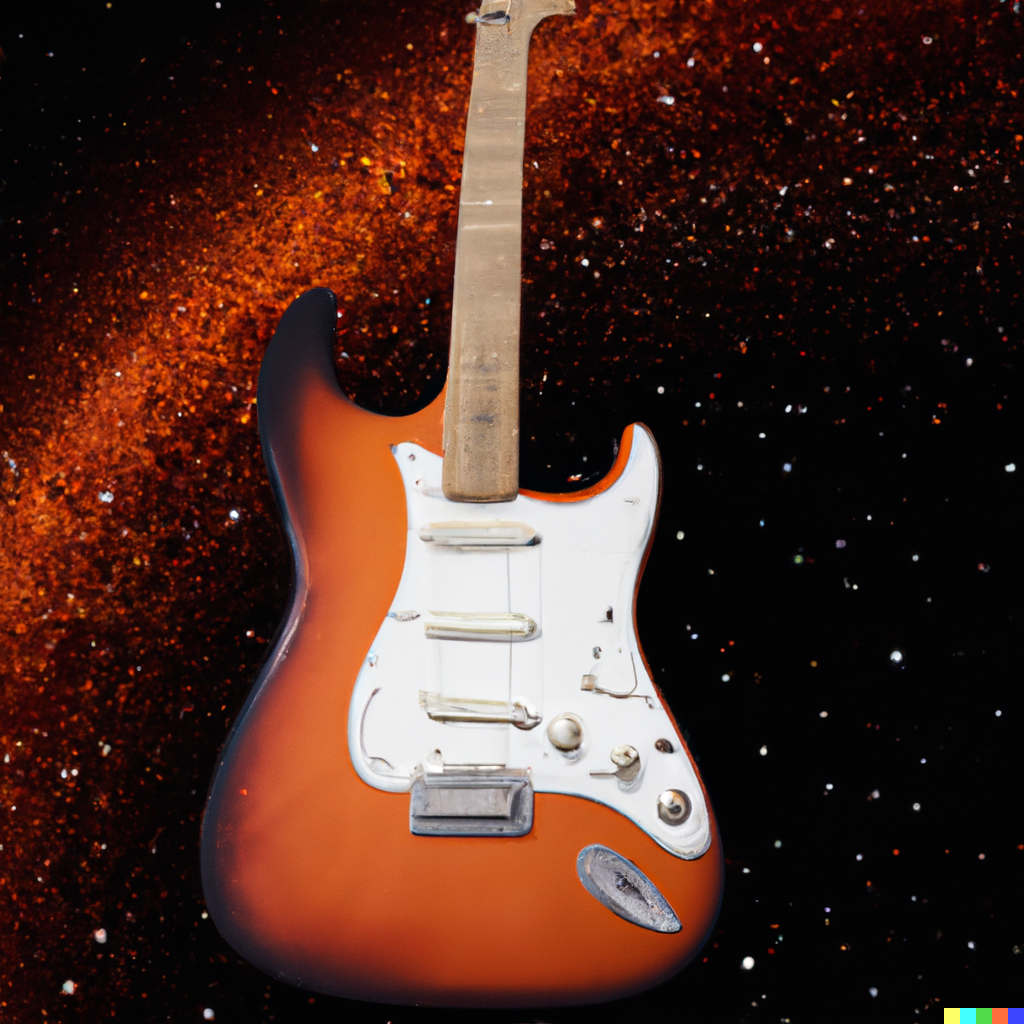This blog isn't always about guitar lessons. Stand by for a very abstract post.....
"Reverb is the Starfield of Music"
Or so I claim.
In science fiction movies, the starfield sets the tone.
In 2001: a Space Odyssey, it's understated. The stars are not too bright, colorful or lurid. They don't move. You don't see them zooming by out if a porthole.
Realistic.
As the backdrop to the 2nd act of the movie, it defines what the movie sets out to do at that point: pull you in by trying not to defeat the illusion of "real". In less realistic movies, maybe sci-fi shows from before the 90s, you had bright stars flying past a window on a starship: all the same color, same size. Not as realistic, BUT - perhaps within the "creative universe" of said show. Both a budget-restricted pragmatic choice, but maybe also a simple, quick way of communicating "you're in a starship traveling in a direction".
Likewise, reverb on recordings once was based solely on analog gear, not unlike the analog "practical" effects of science fiction movies of yesteryear. While the gear was primitive - springs, sheet metal plates, empty rooms with tiled walls - there was no Uncanny Valley to cross.
Likewise, reverb on recordings once was based solely on analog gear, not unlike the analog "practical" effects of science fiction movies of yesteryear. While the gear was primitive - springs, sheet metal plates, empty rooms with tiled walls - there was no Uncanny Valley to cross.
But just like the early days of computer graphics in movies, when digital came into recording it wasn't necessarily convincing. Like early CG science fiction effects, you knew it kind of represented something but wasn't perfectly realistic. It was good enough, and again, a pragmatic solution to production.
Some music in the 80s suffers from this, although some just wallows in Artificial Modulated Reverb. The early Sting recordings come to mind, Queensryche's _Operation Mind Crime_, some others. Like the starship Enterprise in _Star Trek: the Next Generation_, something BIG was doing SOMETHING in a BIG SPACE. You knew it wasn't real, but it was its own art form in a sense.
Post 80s bands started wanting real drum sounds in actual rooms, and for awhile Big Room Sounds supplanted the artifice of Lexicon digital reverbs. Similarly, science fiction movies have started to reject the early efforts of George Lucas to use digital technology to "enhance" (ahem..) classic movies. For some movies the look and feel *was* "computer graphics" (Tron, Terminator 2, the Abyss, et al) but when it was mixed in after the fact, the contrast wrecked the production.
Recordings, being cheaper and much more common by orders of magnitude, have gone through this iteration already. The Bricastic hardware digital reverb, digital convolution reverbs, have started pulling recording out of the Uncanny Valley somewhat, but some recordings are still prone to having peculiar combinations of "spaces" that are incongruent.
Just as some sci-fi movies feature a lot of exterior special effects, that "place" you in that world, others are more careful and spartan with the use of depicting space. On recordings, the same thing occurs: the reverb tone, sound, and amount is the backdrop for a recording.
Post 80s bands started wanting real drum sounds in actual rooms, and for awhile Big Room Sounds supplanted the artifice of Lexicon digital reverbs. Similarly, science fiction movies have started to reject the early efforts of George Lucas to use digital technology to "enhance" (ahem..) classic movies. For some movies the look and feel *was* "computer graphics" (Tron, Terminator 2, the Abyss, et al) but when it was mixed in after the fact, the contrast wrecked the production.
Recordings, being cheaper and much more common by orders of magnitude, have gone through this iteration already. The Bricastic hardware digital reverb, digital convolution reverbs, have started pulling recording out of the Uncanny Valley somewhat, but some recordings are still prone to having peculiar combinations of "spaces" that are incongruent.
Just as some sci-fi movies feature a lot of exterior special effects, that "place" you in that world, others are more careful and spartan with the use of depicting space. On recordings, the same thing occurs: the reverb tone, sound, and amount is the backdrop for a recording.

No comments:
Post a Comment